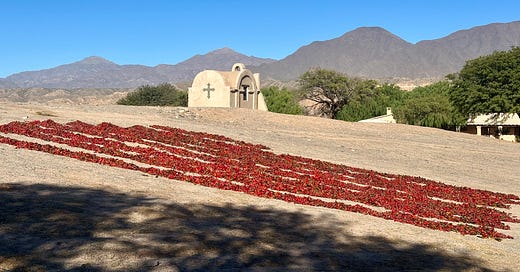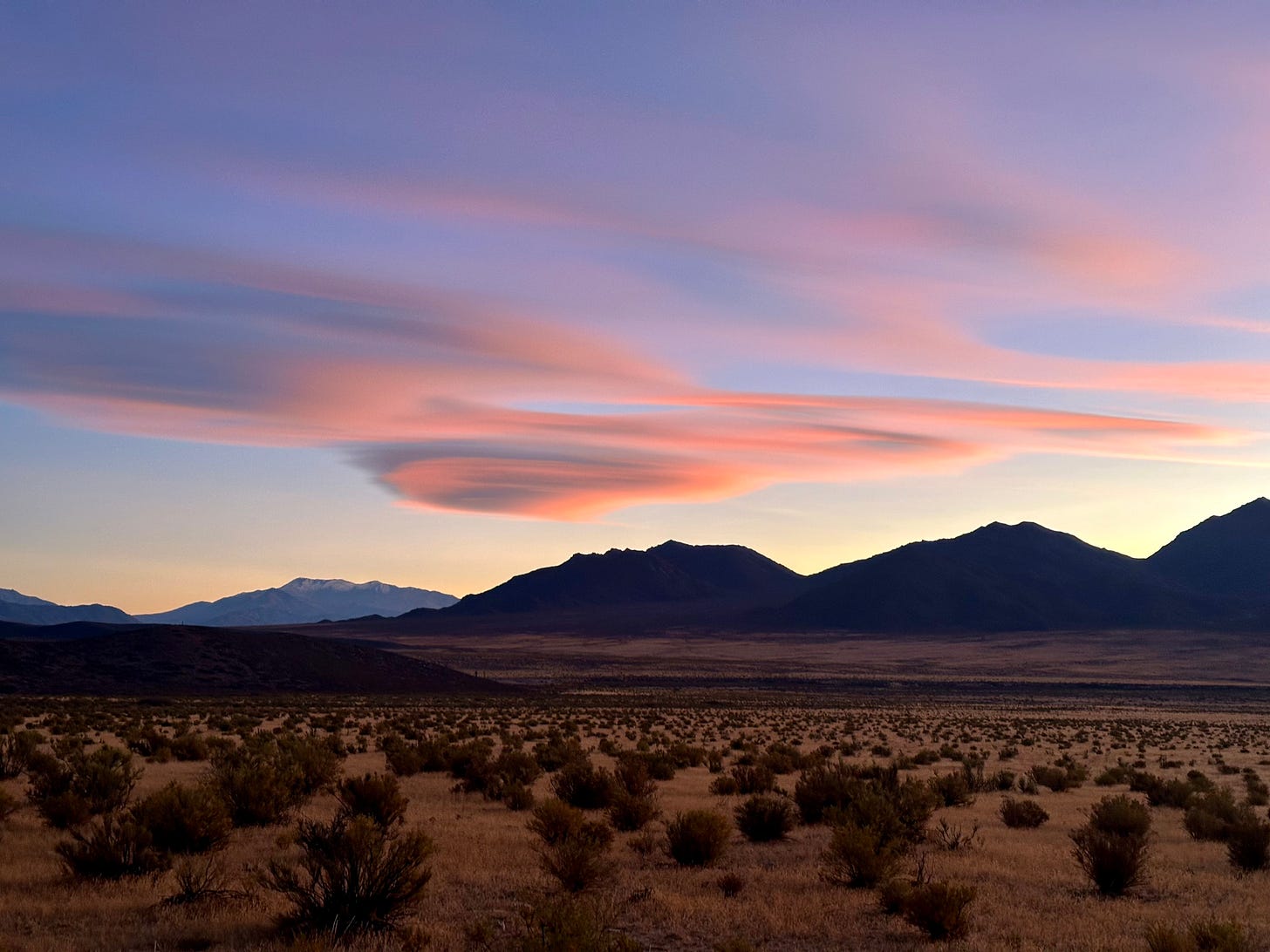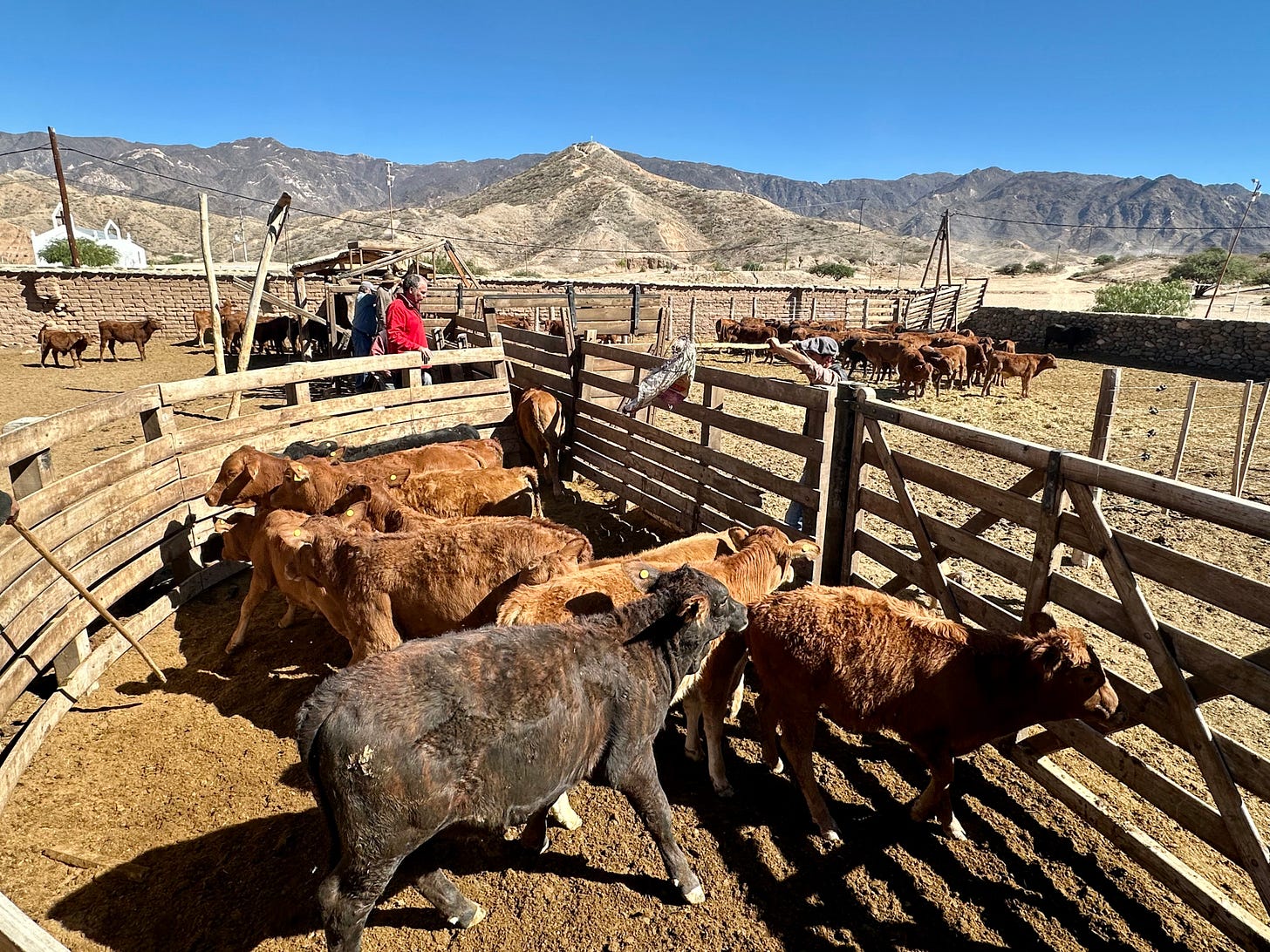San Martín, Calchaqui Valley, Argentina
May 2nd, 2025
Dear Reader,
After the funeral at Gualfin, we wound our way back down the dusty, bumpy trail to San Martín and settled back into the routine of life there.
But I’ll get back to that…when I wrote to you on Tuesday, I did not mention what role José played at the ranch.
He had been on the team there since my parents bought the place 20 years ago. My dad describes him as a “tough hombre”, and tells the story of how during a round up once he saw José lasso a huge cow, wrap the rope behind his back, and get pulled along the ground by the mad animal like he was water skiing.
José was only 48 when he died last week. He was born at Gualfín, worked for the ranch, and would likely have spent the rest of his life there.
He worked with the cows, protecting them from wild animals like condors and puma, moving them from one pasture to another, vaccinating, and castrating. He was also a key worker in the vines. A vineyard requires year round attention, so José, along with a crew of six men, would water, prune, weed, and harvest.
The ranch will dearly miss him. May he rest in peace.
Sunset at Gualfín.
Back at San Martín, the chilly mornings and evenings lend themselves to the warm glow of a fire. Hence, a small fire burns in the office where I am sitting. Our pup Ramona is curled up on the sofa, and my mother’s fingers fly across her keyboard.
Tap tap tap.
Outside, the hum of the chainsaw and the buzz of the drill fill the air as my dad gets wood ready for burning, workers hang new lights in the gallery, and Adrien and a peone - a ranch hand - put up metal bars for curtains in the guest room, and hang coat racks.
The cows were being vaccinated this week, so we drove across the river to check out the scene.
A corral made of wood and stone, with chutes where the cows can be separated and held in place for vaccinations was built when my parents bought the ranch about 7 years ago.
The cows were rounded up in the corral, and the cowboys prodded them with sticks to keep them moving through the chute. The chute had room for about three or four cows. On either side was a sliding barn door. The first one was opened and the cows were herded in where they were vaccinated.
The cowboy Lazaro kept a pen and notebook in which he jotted down whether the cow was a male or female, and then he’d let the door open so the animal could pass through, and slam it shut before the next one could get away.
Prodding the cattle into the shoot for vaccination.
We went on a long ride around the farm with our capataz, Pedro. On the way back, we passed Pablo, one of the cowboys, herding the cows back to the corral near our house.
Pablo herds the cows back to the corral by the “sala” - the ranch house - at San Martín.
Peppers dried in the sun by the chapel, the fruit of the labor of the share croppers. They raise peppers and onions which they sell to a fellow who takes them to market. The ranch gets 60% of the profit.
Peppers dry in the sun by the chapel.
Tomorrow, we’ll head back up to Gualfín to attend an asado at the home of José’s mother. The barbecue marks the end of the mourning prayer vigil for her son.
More to come.
Abrazos,
Mariah








It's chutes, not shoots, where the cows can be separated. And cows are not male or female, cows are female, unless they have gender dysphoria... :-)) Cows are female, heifers are female, bulls are male, steers are male. Calves are male or female. Cattle are male or female. He should have jotted down whether the animal was male or female. (My inner farmer is coming out.) Otherwise, lovely article!
I don’t mean to sound pedantic but coming from a cattle property background I think spell check invaded your post?! I believe shute is the term for yard races.